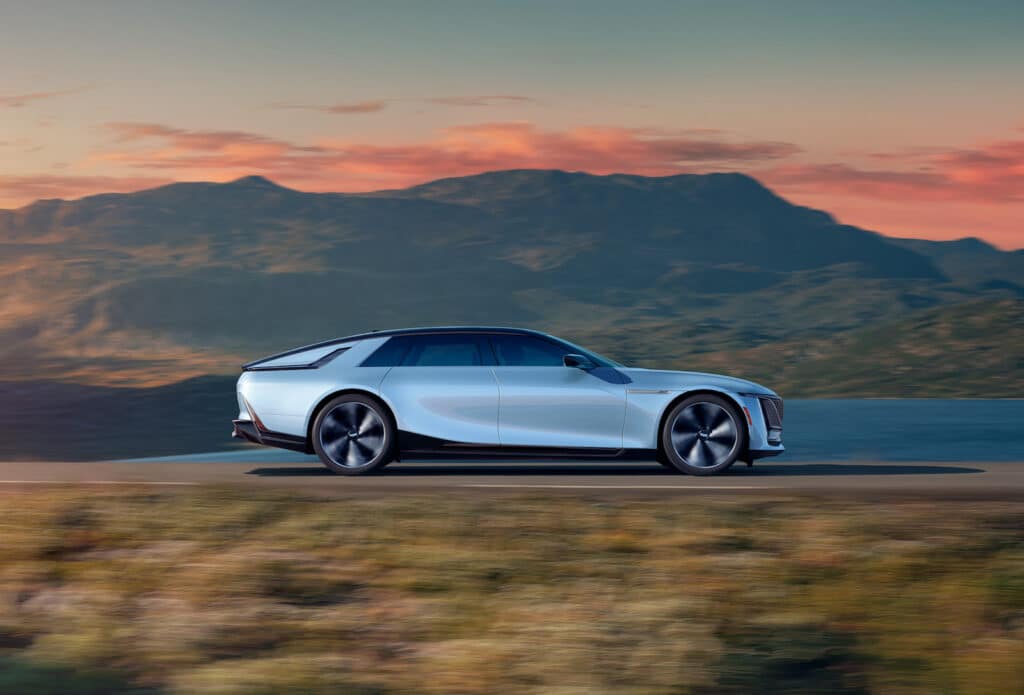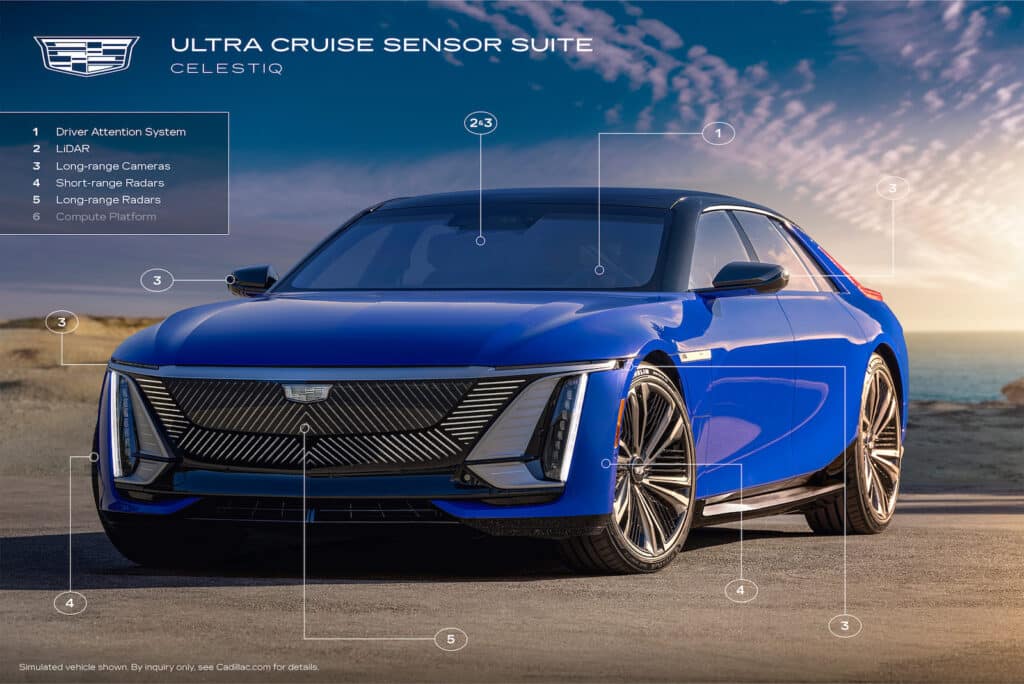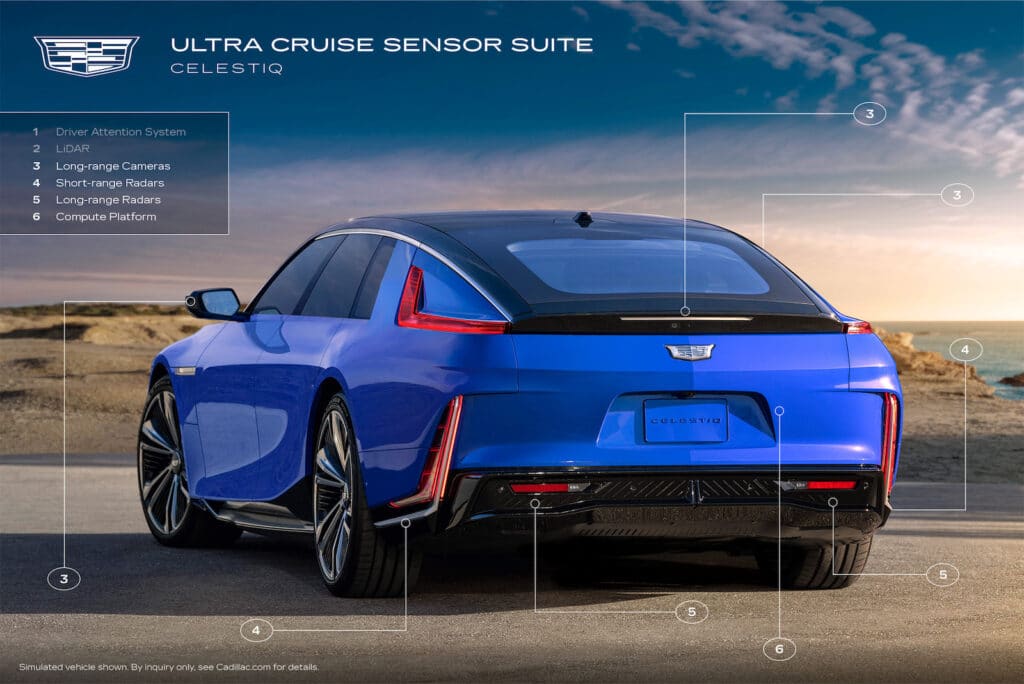We humans make it seem easy, a pair of eyes helping us navigate the highways whenever we’re behind the wheel. When General Motors launches its next-generation autonomous driving system, it will turn to a mix of sensor systems, including a 3D laser technology known as lidar.
Tentatively scheduled to debut on a select group of luxury models later this year, the automaker claims Ultra Cruise will permit hands-free driving “in 95% of all driving scenarios.” It will, however, still require a driver to sit behind the steering wheel and be at the ready to take over in emergencies — or if the vehicle enters a section of roadway not covered by the Ultra Cruise mapping system.
“GM’s fundamental strategy for all ADAS (advanced driver assistance systems) features, including Ultra Cruise, is safely deploying these technologies,” said Jason Ditman, GM chief engineer, Ultra Cruise. And that requires a “sensor fusion.”
Sensor fusion
To ensure maximum coverage of its surroundings, vehicles equipped with Ultra Cruise will use:
- High-resolution cameras;
- Various forms of short- and long-range radar;
- Sonar; and
- Lidar.
That stands for “light detection and ranging,” and it’s a sophisticated form of laser technology that can provide a detailed, three-dimensional “map” of the world around it. Lidar sensors have come down sharply in price over the past few years, the devices also becoming smaller and easier to place inside of a vehicle.

Lidar going mainstream
On early autonomous vehicle prototypes, the sensors were as large as bricks and typically mounted on the roof or along the corners. With Ultra Cruise, the sensors will be mounted ahead of the rearview mirror, alongside some of the cameras the system uses,
The various sensors not only will look forward but rearward, as well as to the sides of the vehicle to spot potential obstacles. Using what GM describes as an “all-new computing system,” signals from each sensor will be “fused,” improving the ability of Ultra Cruise to spot obstacles, large and small, such as a moving vehicle, a pedestrian, bicyclist or even an animal.
The autonomous system also relies on a digitized, highly detailed 3D map of the roadway which is continuously compared to the data provided by those various sensors.
From Super Cruise to Ultra Cruise
Like the less sophisticated Super Cruise system already used in many GM vehicles, Ultra Cruise also relies on a camera system to monitor the driver. Motorists must remain attentive. If their eyes stray from the road or they become disabled, the system can take a series of steps to get the driver to again follow the road. If not, the vehicle may pull over and even call for emergency responders.

The Super Cruise system has gone through a number of updates since it was first launched on the Cadillac CT6 sedan in 2018. A recent update allows some GM models to operate hands-free on more than 400,000 miles of U.S. roadways, including some undivided two-lane routes. The original system covered barely 100,000 miles, primarily limited-access Interstates. The latest upgrades also can pass slower vehicles automatically.
While GM claims Ultra Cruise will handle 95% of U.S. roadways, including those in dense urban settings, CEO Mary Barra previously said this is the eventual goal. It’s expected to grow to that point over a several-year period.
Growing competition
The automaker is just one of a growing number of manufacturers offering semi-autonomous driving capabilities, including Nissan, BMW, Volvo and Mercedes-Benz. The Ford BlueCruise system recently was rated tops by Consumer Reports magazine — though both Ford and GM technology were ranked above the widely publicized Tesla Autopilot and Full Self-Driving systems. Both of those actually require motorists to maintain a light grip on the steering wheel — though Tesla CEO Elon Musk has repeatedly promised a fully autonomous FSD is close to production.
All these systems are considered “Level 2” autonomous technology by industry standards.

Mercedes, meanwhile, recently received approval from Nevada to start activating its new Drive Pilot system. Already available in Germany, that technology is the first Level 3 autonomous system. It allows motorists to turn attention away from the road, texting, calling, even watching videos. But it operates only at speeds of around 30 mph and below. Motorists must still be ready to take control, if necessary.
With the exception of Tesla, all the other automakers developing autonomous systems plan to begin using lidar to improve the accuracy of their technologies. Some analysts believe the EV maker may eventually shift direction, however.
Public fear grows
But how the public will respond is a significant question. Despite reasonably strong sales of the current GM Super Cruise system, a study released last week by AAA found growing concerns about self-driving vehicles. More than two-thirds, 68% of respondents overall, said they fear the technology, up 13% since 2022.
The road and travel service suggested recent reports about crashes, primarily involving Tesla vehicles using AutoPilot and FSD, have contributed to the problem.
“We were not expecting such a dramatic decline,” said Greg Brannon, AAA’s Director of Automotive Research.
But the study also found significant misperceptions about autonomous technology. Among other things, one in 10 American motorists now believe vehicles are available that can drive themselves while the motorist is asleep. Most automakers and tech companies say such capabilities are still years away.

